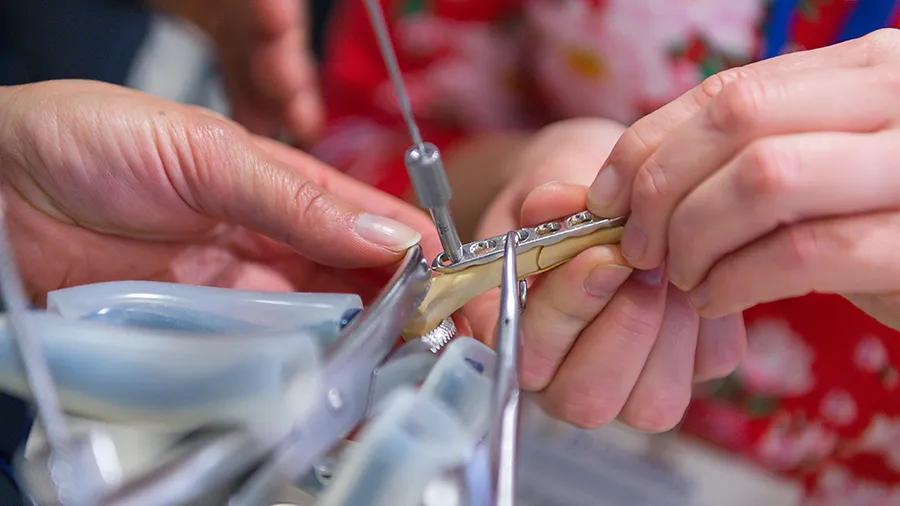Screw fixation
1. Principles
Anatomic reconstruction of the joint surface is essential.
Interfragmentary compression is achieved with a lag screw for anatomical reduction of the articular fracture.
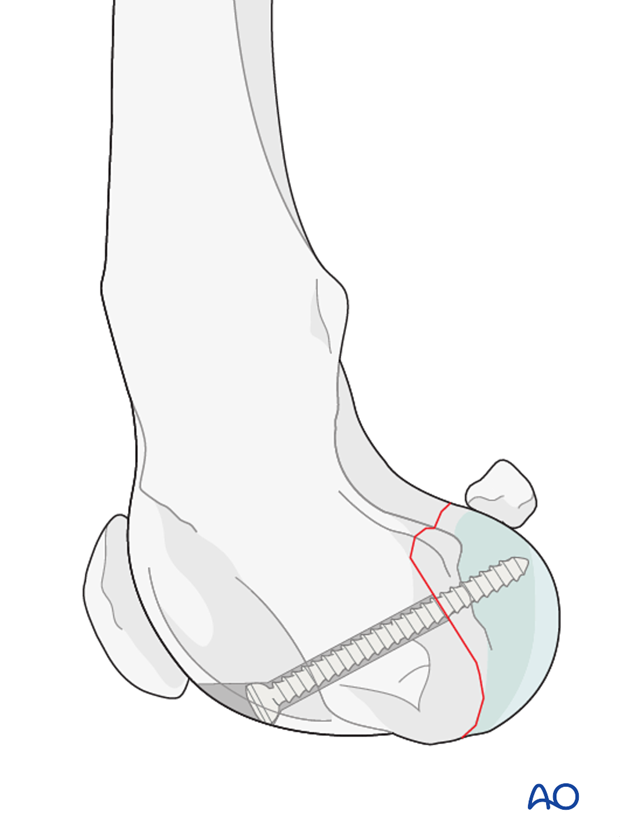
2. Positioning and approach
This procedure is performed with the patient placed in dorsal recumbency.
One of the following approaches is utilized:
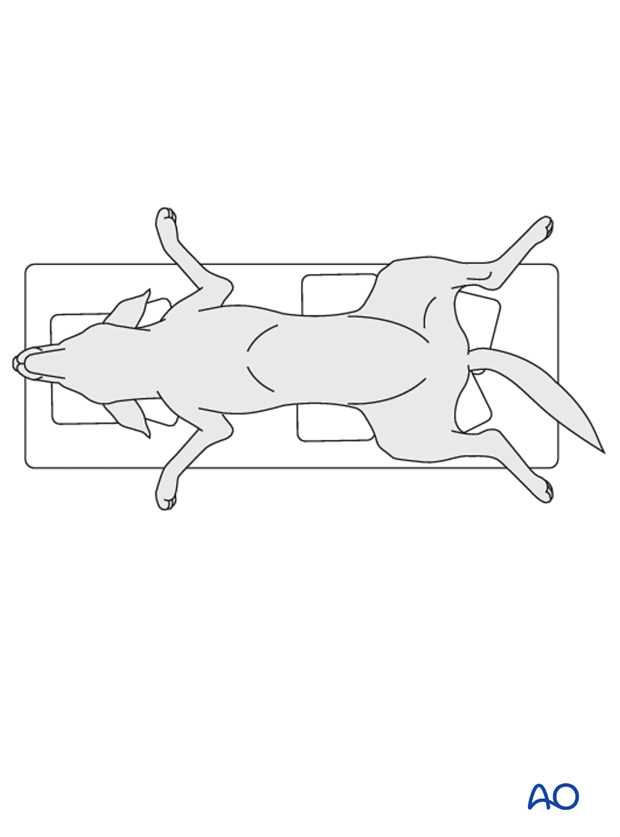
3. Surgical technique
Reduction and preliminary stabilization
The fracture is reduced, and preliminary stabilization achieved with pointed reduction forceps. Anatomic reduction is essential in all cases.
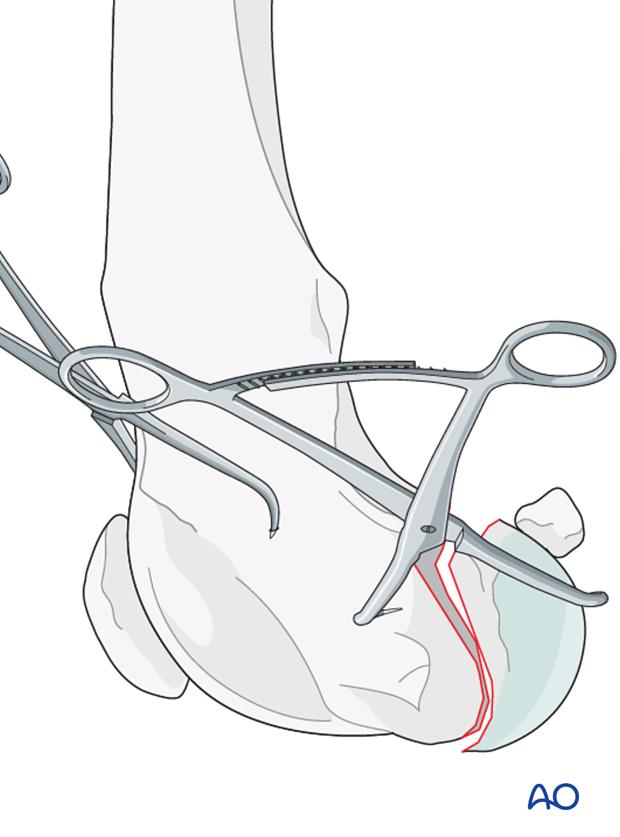
Fixation
The lag screw is inserted perpendicular to the fracture plane. The screw is placed in cranial to caudal direction.
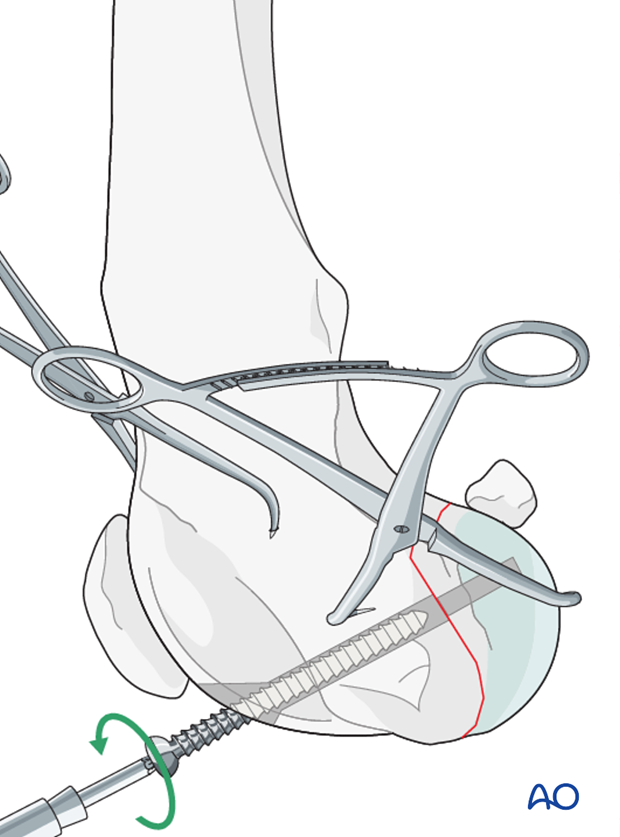
The optimal starting point is in the trochlear groove and the screw head must be countersunk under the articular surface to avoid interference with the patella.
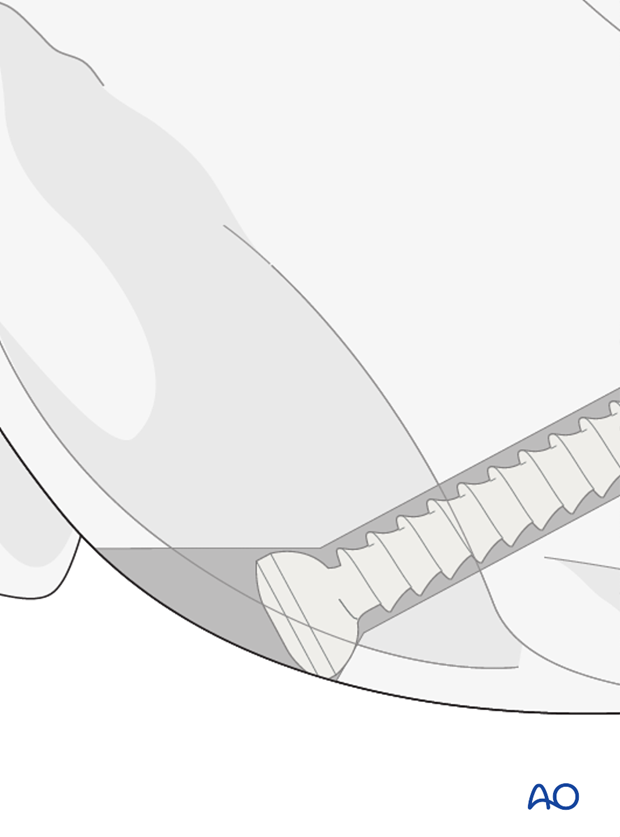
Note: If the screw is not placed perpendicular to the fracture plane, this will result in loss of anatomic reduction of the articular surface.
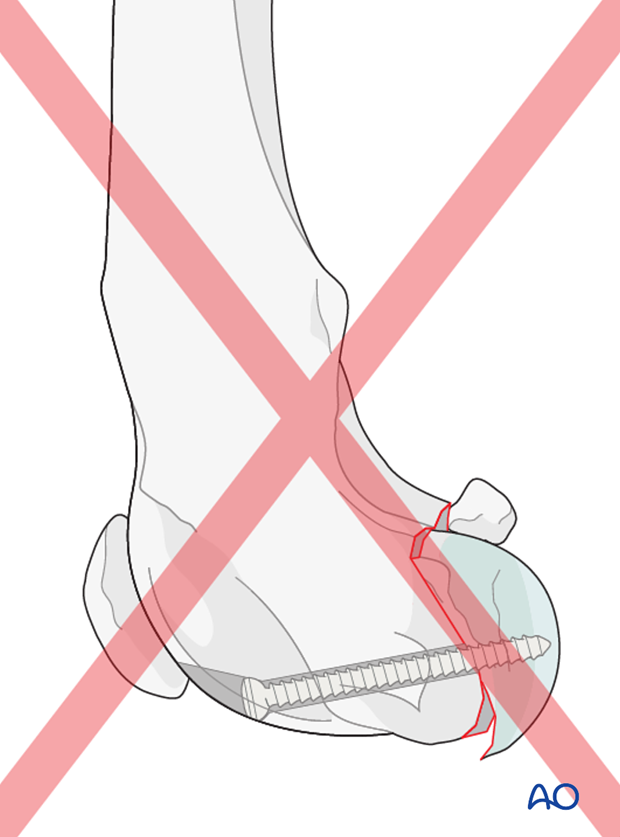
Additional stabilization can be achieved by:
- A K-wire
- An additional lag screw in larger fragments
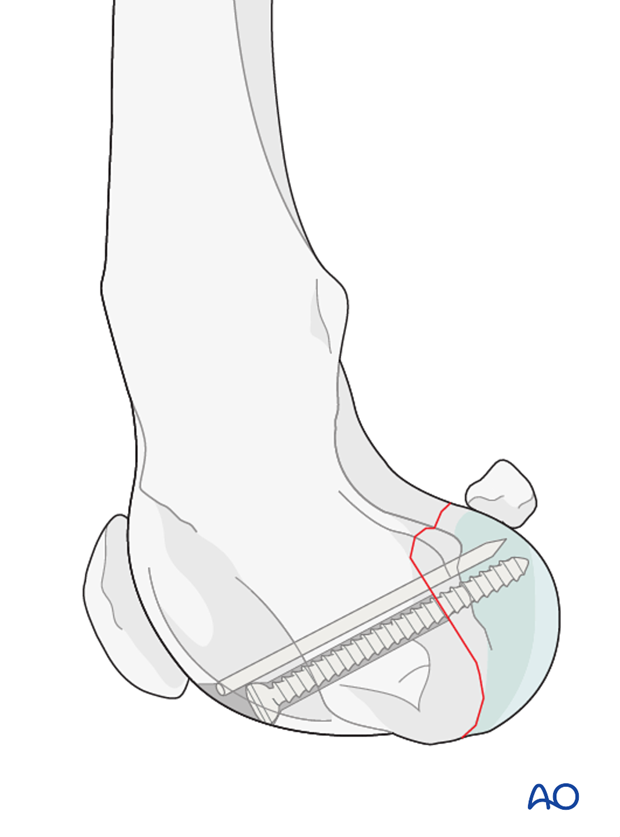
Validation of fixation
Postoperative radiographs should be taken to assess the repair.

4. Aftercare
Activity restriction and controlled walking is indicated until evidence of bone healing is detected by radiographic examinations.
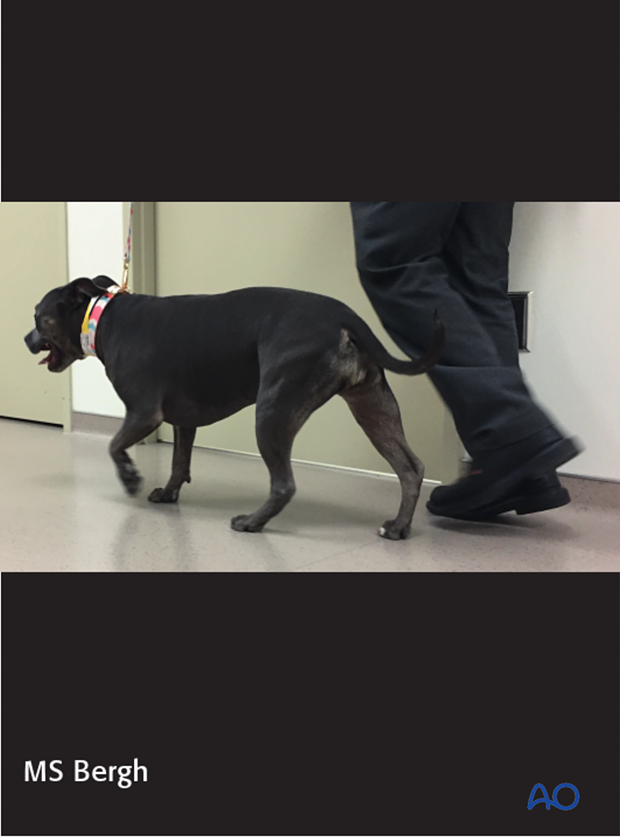
Phase 1: 1-3 day after surgery
The aim is to reduce the edema, inflammation and pain using anti-inflammatory and analgesic medications.
Passive range of motion of the hip and stifle joint can be initiated to promote mobility and joint health.
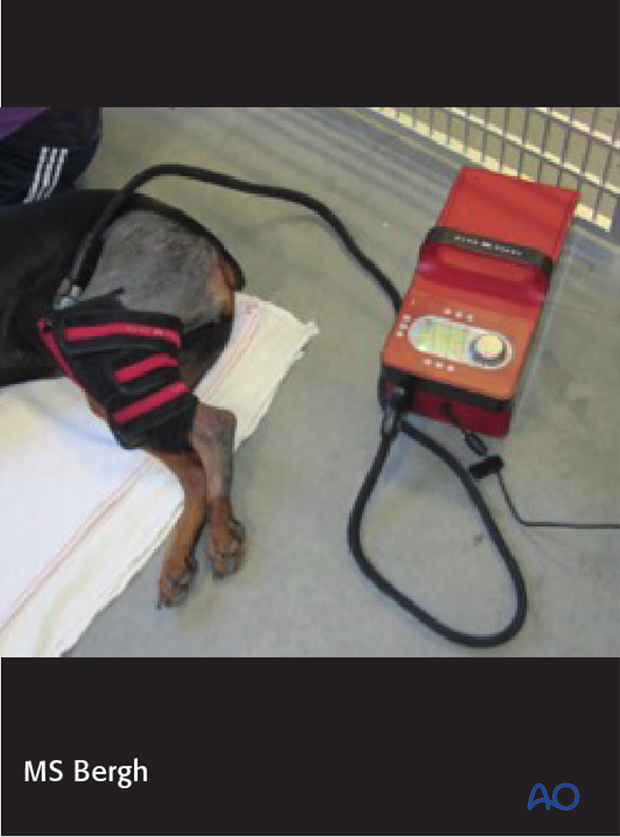
Phase 2: 4-10 days after surgery
The aim is to resolve the hematoma, edema and control pain, and prevent muscle contracture.
Anti-inflammatory and analgesic medications are still needed. Rehabilitation and integrative medical therapies can be used.
Special attention should be given to patients less than 1 year of age with a femoral fracture, as they are at risk for developing quadriceps contracture. Early controlled activity and passive range of motion is strongly recommended to help prevent this complication.
If the patient is not starting to use the limb within few days after surgery, a careful evaluation is recommended.
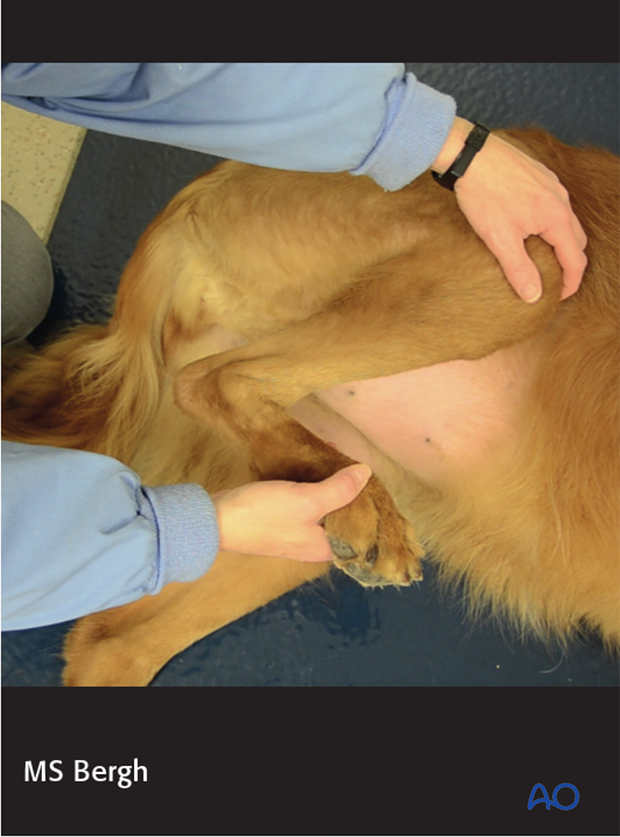
Phase 3: 10 days-8 weeks after surgery
Rehabilitation therapy is continued.
10-14 days after surgery the sutures are removed.
Radiographic assessment is performed every 4-8 weeks until bone healing is confirmed.
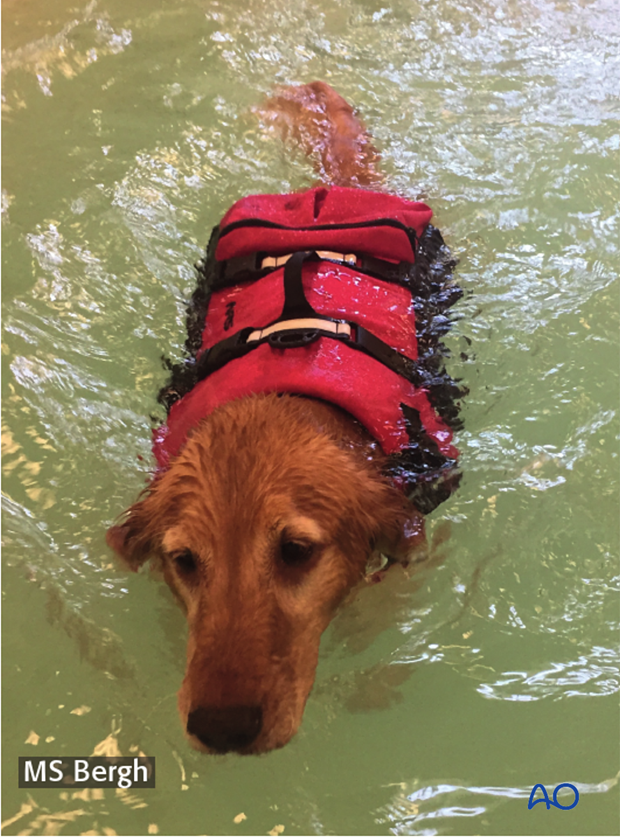
Implant removal
Implants may be removed if there is irritation or infection present, however if they are not causing problems for the patient, there is no need for implant removal.
